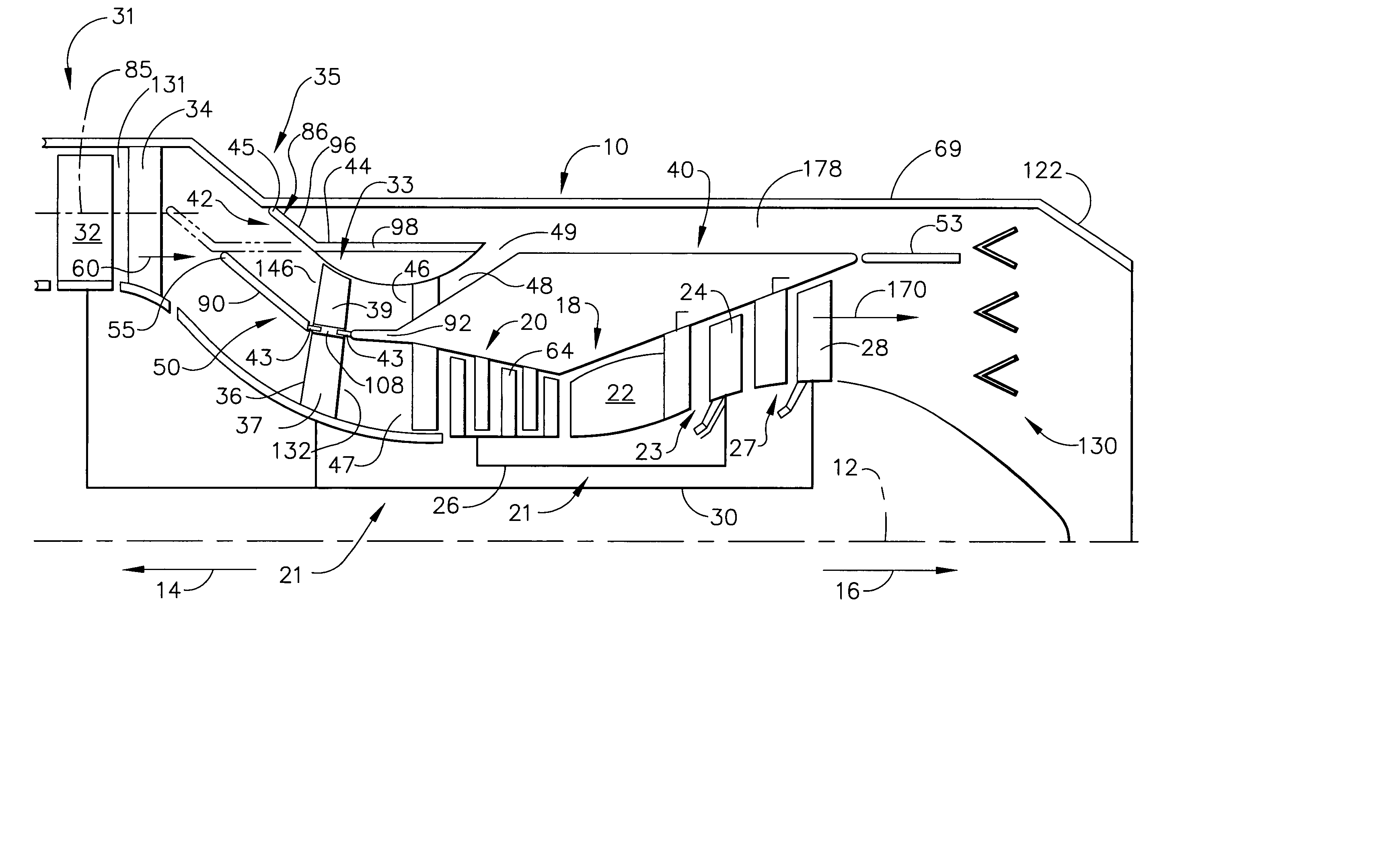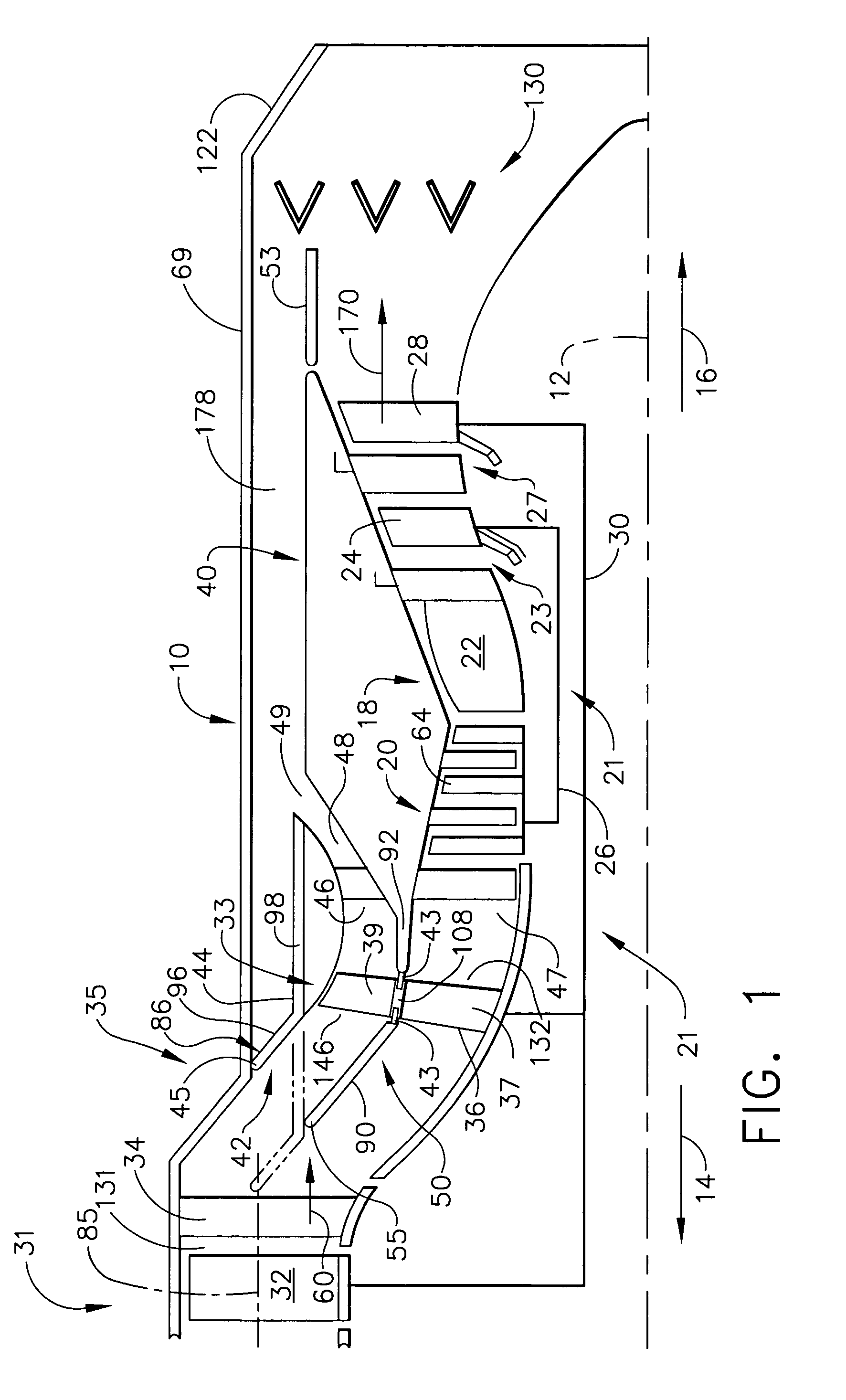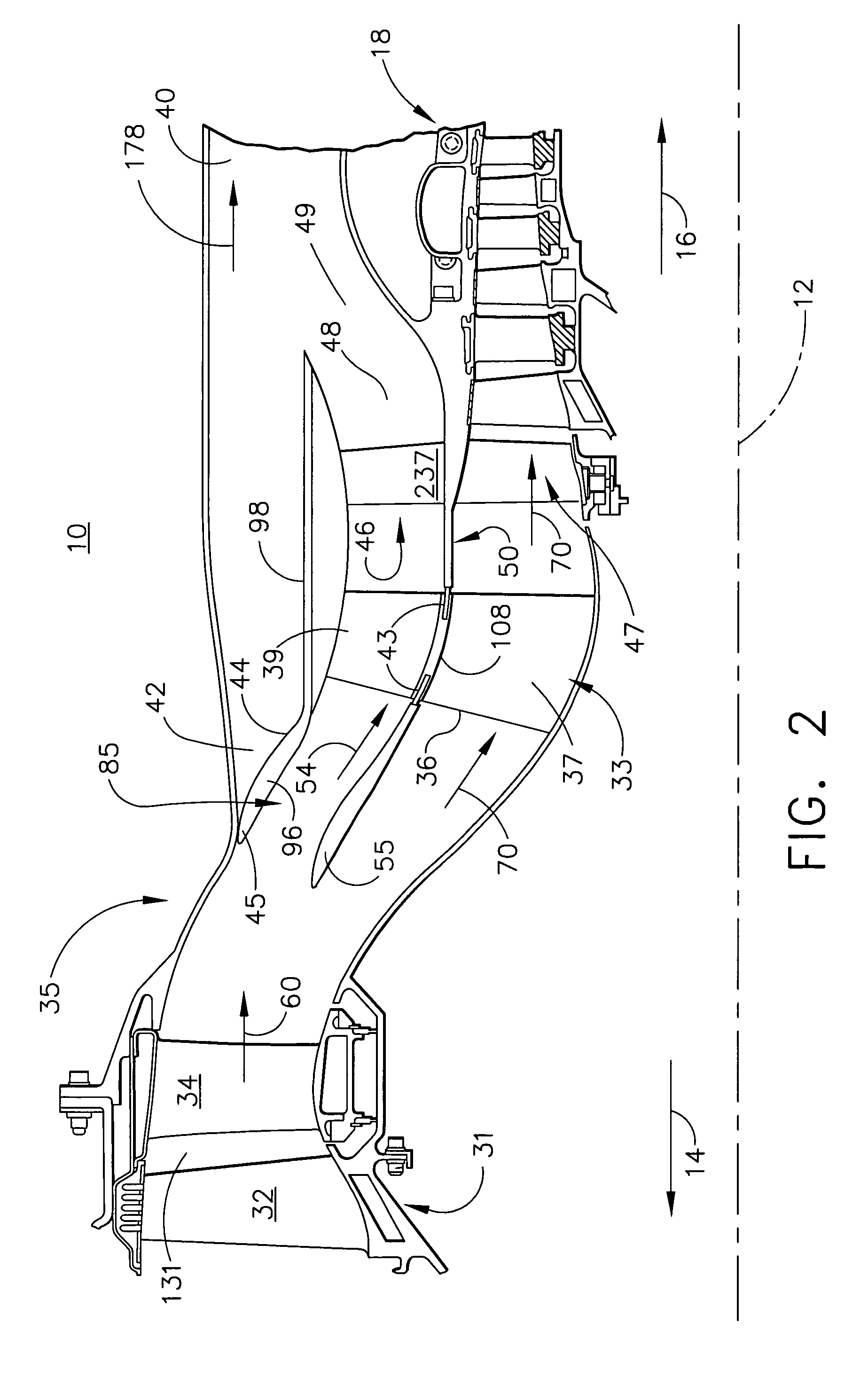Gas turbine engine with variable pressure ratio fan system
a gas turbine engine and variable pressure technology, applied in the field of aircraft gas turbine engines, can solve the problems of reducing the hub pressure ratio that supercharges the core, negating the improvement of specific fuel consumption, and reducing cycle efficiency, so as to achieve good specific fuel consumption, reduce power cruise operation, and high specific thrust
- Summary
- Abstract
- Description
- Claims
- Application Information
AI Technical Summary
Benefits of technology
Problems solved by technology
Method used
Image
Examples
Embodiment Construction
[0023]Illustrated in FIG. 1 is a bypass turbofan engine 10 having a generally axially extending axis or centerline 12 generally extending in a forward direction 14 and an aft direction 16. The bypass turbofan engine 10 includes a core engine 18 (also called a gas generator) which includes a high pressure compressor 20, a combustor 22, and a high pressure turbine (HPT) 23 having a row of high pressure turbine blades 24, all arranged in a serial, axial flow relationship. High pressure compressor blades 64 of the high pressure compressor 20 are fixedly connected in driving engagement to the high pressure turbine blades 24 by a larger-diameter annular core engine shaft 26 which is disposed coaxially about the centerline 12 of the engine 10 forming a high pressure spool 21.
[0024]A combustor 22 in the core engine 18 mixes pressurized air from the high pressure compressor 20 with fuel and ignites the resulting fuel and air mixture to produce combustion gases. Some work is extracted from th...
PUM
 Login to View More
Login to View More Abstract
Description
Claims
Application Information
 Login to View More
Login to View More - R&D
- Intellectual Property
- Life Sciences
- Materials
- Tech Scout
- Unparalleled Data Quality
- Higher Quality Content
- 60% Fewer Hallucinations
Browse by: Latest US Patents, China's latest patents, Technical Efficacy Thesaurus, Application Domain, Technology Topic, Popular Technical Reports.
© 2025 PatSnap. All rights reserved.Legal|Privacy policy|Modern Slavery Act Transparency Statement|Sitemap|About US| Contact US: help@patsnap.com



